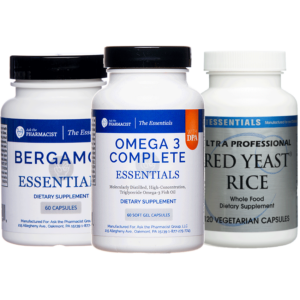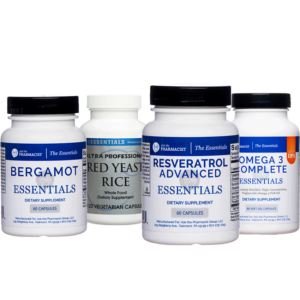
Cholesterol is a waxy substance that’s found in the fats (lipids) in your blood. There are two main types that travel through the blood on proteins called “lipoproteins.”
The first is high-density lipoprotein or HDL. It’s the “good” one which absorbs cholesterol and carries it back to the liver. The liver then flushes it from the body. High levels of HDL cholesterol can lower your risk for heart disease and stroke.
The second is low-density lipoprotein or LDL. It’s been dubbed the “bad” cholesterol which makes up most of your body’s cholesterol. High levels of LDL cholesterol raise your risk for heart disease and stroke.
And, to make it more interesting, let’s throw in the Triglycerides, which are the most common type of fat in the body. They store excess energy from your diet.
What does it all mean?
It means that if your cholesterol levels are out of whack, then you could be headed for trouble–the heart attack kind of trouble.
How can you control it?
The most important thing you can do to lower your LDLs and raise your HDLs is to adopt an eating plan such as the Dietary Approaches to Stop Hypertension (DASH) diet. It emphasizes veggies, fruits, whole grains and limits foods that are high in saturated fats and sugar. Obviously maintaining a healthy weight, exercising, and not smoking are key factors as well.
There are medicines to improve your cholesterol levels as well, but if you’re trying to go the more holistic, natural route, there’s an exceptional alternative in the form of red yeast rice. Research shows that this little gem contains considerable amounts of monacolin K which can lower your total blood cholesterol level, LDL level, and your triglyceride level.
But wait! There’s more….
For those who literally can’t tolerate the traditional cholesterol medicines, there’s even better news.
Two studies supported by NCCIH have indicated that some people who had been unable to tolerate “statin” drugs because of side effects were able to tolerate red yeast rice. It is uncertain whether the smaller amount of monacolin K in the red yeast rice products, as compared with the amounts of active ingredients in the drugs, accounted for the greater tolerability or whether other factors were responsible. Either way, red yeast rice is a winner when it comes to fighting bad cholesterol.
*We would be remiss if we didn’t tell you that red yeast rice carries the same indications and side effects as the “statin” drugs. As with any supplement, it’s important to check with your doctor before starting anything, especially if you’re pregnant or nursing.
Sources
https://www.ncbi.nlm.nih.gov/pubmed/20102918
https://medlineplus.gov/hdlthegoodcholesterol.html
https://medlineplus.gov/triglycerides.html
https://www.nhlbi.nih.gov/health-topics/dash-eating-plan
https://www.mayoclinic.org/drugs-supplements-red-yeast-rice/art-20363074


